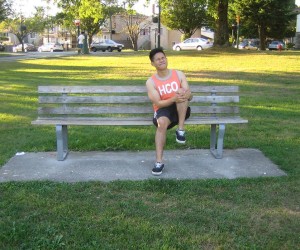Always bear in mind that there are various types of knee arthritis. The prevalent type is no other than osteoarthritis which is a progressive disease that steadily wears down the joint cartilage and likely to strike after middle age. You can enroll in a course on first aid today so that you can help ease the symptoms.
Another type is rheumatoid arthritis which is an inflammatory condition that can occur in any age. Once arthritis develops after an injury to the knee, it is called as post-traumatic arthritis. This can occur even years after a torn meniscus, knee fracture or ligament injury was sustained. In addition, certain types of arthritis can also cause fatigue.
Steady increase in pain
The pain can start abruptly but it is likely to develop in a slow rate. Initially, there is pain in the morning or after being in an inactive state. The knees tend to hurt when climbing stairs, standing up from a seated position or kneeling.
In some circumstances, the individual feels pain even when sitting down. Some claim that changes in the weather or a damp climate can trigger pain. The knee pain that wakes the individual from sleep can indicate osteoarthritis.
Tenderness or swelling

Knee arthritis can also lead to periodic inflammation that might be due to the formation of bone spurs or extra fluid in the knee. Take note that the swelling can be evident after an extended period of inactivity especially when waking up in the morning. The skin on the knee appears red or warm to the touch. After some time, the individual can experience chronic inflammation of the knee that could not be relieved by anti-inflammatory drugs or over-the-counter medications.
Locking and buckling
Over time, the knee muscles can weaken and the whole structure of the joint becomes unstable. The generalized weakness in the knee can cause the knee to give away or buckle. In most cases, the joint can stick or lock up in which it could not be bent or straighten when wanted. These symptoms usually come and go for no apparent reason.
Popping or cracking sounds
There is also a grinding sensation in the knee once they are moved. In most cases, there is even popping or cracking sound from the knees. Take note that these symptoms can occur due to the loss of smooth cartilage that facilitates smooth range of motion. If the individual has knee arthritis, the disturbing noises and grinding sensation are caused by the rough surface and bone spurs rubbing on each other while the joints are moved.
Diminished range of motion
Knee arthritis can lead to limited range of motion during certain movements. This is due to the progressive wearing out of the cartilage.
Loss of joint space
When an X-ray is taken, it will reveal the loss of joint space which is responsible for causing the disturbing sounds and limited range of motion. Take note that the space which allows movement is lost due to the bone spurs and other rough surfaces.
Knee deformity
As the knee arthritis progresses, there are changes in the appearance of the knees. In most cases, there is a depressed appearance as the surrounding muscles become thin and weak. The knees tend to point toward each other which results to a knock-kneed appearance or bent outward.
